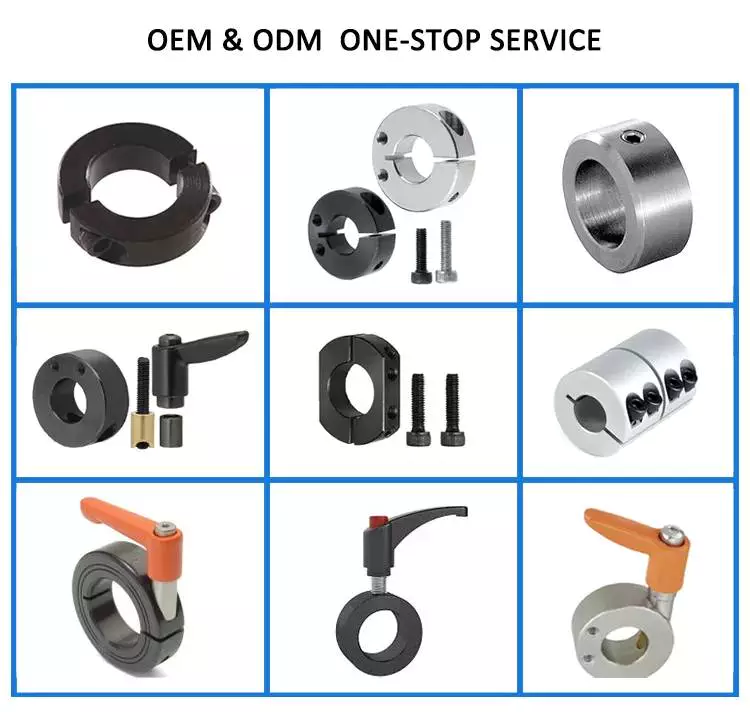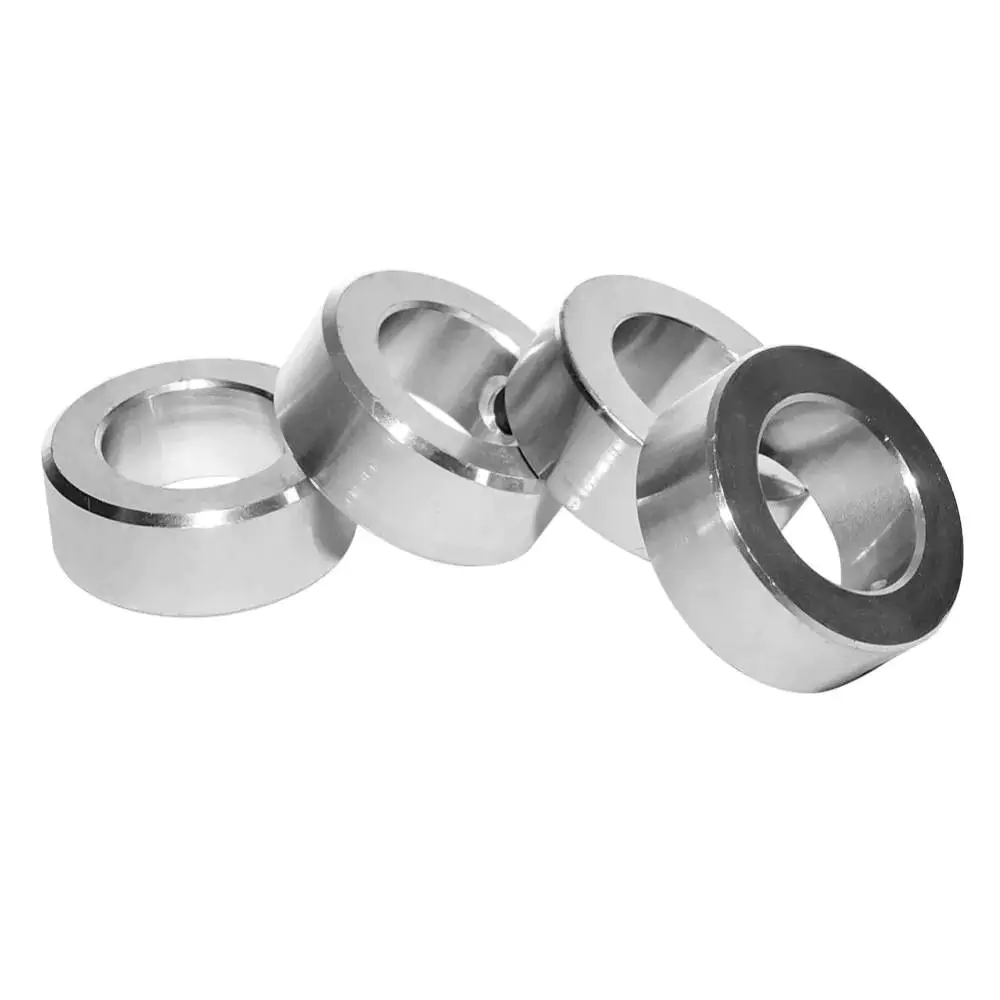
Are there guidelines on selecting shaft collars for applications with varying loads?
Yes, there are guidelines available to help in selecting shaft collars for applications with varying loads. When choosing shaft collars, it is important to consider the expected load conditions to ensure proper performance and prevent failures. Here are some guidelines to consider:
- Load Capacity Ratings: Shaft collars are typically assigned load capacity ratings by manufacturers. These ratings indicate the maximum load that a collar can withstand without deformation or failure. When selecting shaft collars for applications with varying loads, it is important to choose collars with load capacity ratings that exceed the maximum expected load in the application. This provides a safety margin and ensures reliable performance even under fluctuating load conditions.
- Dynamic Load Considerations: In applications with varying loads, it is important to consider both the static and dynamic load conditions. Static load refers to the constant load applied to the shaft collar, while dynamic load refers to the fluctuating or cyclic loads. The dynamic load can be higher than the static load due to factors such as vibrations, impacts, or operational variations. Ensure that the selected shaft collars have sufficient dynamic load capacity to handle the varying loads without premature failure.
- Material Strength: The material strength of the shaft collar is a critical factor in load-bearing capacity. Different materials, such as steel, stainless steel, aluminum, or plastic, have varying strength properties. For applications with varying loads, consider selecting shaft collars made from materials with higher strength and fatigue resistance to ensure they can withstand the load fluctuations without experiencing permanent deformation or fatigue failure.
- Design Features: Certain design features of shaft collars can enhance their load-bearing capacity and performance. For example, collars with a wider width or thicker cross-section can provide greater strength and resistance against deformation. Additionally, collars with multiple set screws or clamping mechanisms can distribute the load more evenly and provide a secure grip on the shaft, reducing the risk of slippage or misalignment under varying loads.
- Consulting with Manufacturers or Engineers: If you have specific application requirements or complex load conditions, it is advisable to consult with shaft collar manufacturers or mechanical engineers. They can provide expert guidance and recommend suitable collar designs, materials, and sizes based on the specific load variations in your application. Manufacturers often have engineering support teams that can assist in selecting the appropriate shaft collars for varying load conditions.
Remember that the selection of shaft collars for applications with varying loads should be based on a thorough understanding of the load characteristics, anticipated load range, and the specific requirements of the application. It is essential to choose collars that can safely and reliably handle the maximum expected loads to ensure optimal performance and prevent premature failure.

Can I find guidelines on lubricating and maintaining shaft collars for optimal performance?
Yes, guidelines on lubricating and maintaining shaft collars for optimal performance can be found. Proper lubrication and maintenance are essential for ensuring the smooth operation and longevity of shaft collars. Here are some common sources where you can find guidelines on lubricating and maintaining shaft collars:
- Manufacturer Websites: Many shaft collar manufacturers provide guidelines or recommendations for lubrication and maintenance on their websites. These guidelines may include information on the type of lubricant to use, the frequency of lubrication, and specific maintenance procedures. Visiting the websites of specific collar manufacturers and exploring their resources section or product documentation can help you find the lubrication and maintenance guidelines you need.
- Product Manuals or Documentation: When purchasing shaft collars, they often come with product manuals or documentation that include instructions for lubrication and maintenance. These manuals may provide step-by-step procedures, recommended lubricants, and maintenance schedules. Referencing the manuals or documentation that accompany your specific collar model can provide valuable guidance on how to properly lubricate and maintain your shaft collars.
- Industrial Machinery Handbooks: Handbooks or reference books related to industrial machinery or mechanical components often include sections on lubrication and maintenance practices. These resources can provide general guidelines and best practices for maintaining various types of mechanical components, including shaft collars. Checking reputable handbooks or reference books in the field of mechanical engineering can offer insights into lubrication techniques and maintenance procedures for optimal performance.
- Online Forums and Communities: Engaging with online industrial forums, discussion boards, or communities dedicated to mechanical components can provide access to valuable insights and experiences shared by professionals and experienced users. By posting inquiries about lubrication and maintenance techniques for shaft collars, you can gather practical advice, tips, and recommendations from individuals who have hands-on experience in the field.
- Consulting with Engineers or Experts: If you have access to engineers or experts in mechanical engineering or industrial equipment, they can provide personalized guidelines for lubricating and maintaining shaft collars based on your specific application and operating conditions. These professionals can consider factors such as the type of collar, the environment in which it operates, and any specific requirements you may have. They can offer insights and recommendations tailored to your needs.
When following lubrication and maintenance guidelines for shaft collars, it is important to adhere to the manufacturer’s recommendations and consider the specific characteristics of your operating environment. Proper lubrication techniques and regular maintenance can significantly contribute to the optimal performance and longevity of your shaft collars.

Are there tutorials on the proper installation of shaft collars?
Yes, there are tutorials available that provide guidance on the proper installation of shaft collars. These tutorials can be helpful for individuals who are unfamiliar with the installation process or want to ensure that they are installing the collars correctly. Here are some common sources where you can find tutorials on the installation of shaft collars:
- Manufacturer Websites: Many manufacturers of shaft collars provide detailed installation instructions on their websites. These instructions may include step-by-step guides, diagrams, or videos that demonstrate the proper installation techniques. Visiting the websites of specific collar manufacturers and exploring their resources section or product documentation can help you find the installation tutorials you need.
- Online Industrial Communities and Forums: Industrial communities and forums dedicated to mechanical components or equipment often have discussions or threads related to the installation of shaft collars. Participating in these communities and posting inquiries about installation techniques can help you connect with professionals or experienced users who can provide guidance or share their knowledge.
- Video Sharing Platforms: Platforms like YouTube or Vimeo host a wide range of instructional videos, including tutorials on the installation of various mechanical components. Searching for “shaft collar installation tutorial” or similar keywords on these platforms can yield helpful videos that visually demonstrate the proper installation techniques. Watching these videos can provide a clear understanding of the installation process and any specific considerations to keep in mind.
- Trade Publications and Magazines: Trade publications or magazines related to mechanical engineering, industrial equipment, or power transmission may feature articles or guides on the installation of shaft collars. These resources often provide detailed explanations, tips, and best practices for proper installation. Checking these publications or their online platforms can give you access to written tutorials or expert insights.
- Online Documentation and Manuals: Some manufacturers or suppliers provide downloadable documentation or manuals for their shaft collars. These documents may include installation instructions along with other technical information. Searching for the specific collar model or brand, followed by keywords like “installation instructions” or “user manual,” can help you find relevant documentation that covers the installation process.
When using tutorials for shaft collar installation, it is important to ensure that the information is sourced from reputable and reliable sources. Follow the provided instructions carefully, and if in doubt, consult with professionals or seek guidance from the manufacturer. Proper installation of shaft collars is crucial for their effectiveness, reliability, and the overall performance of the machinery.


editor by CX 2023-11-27